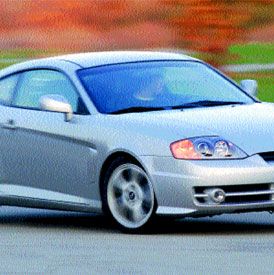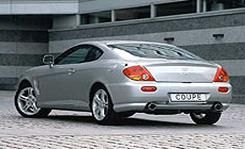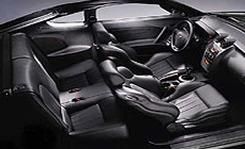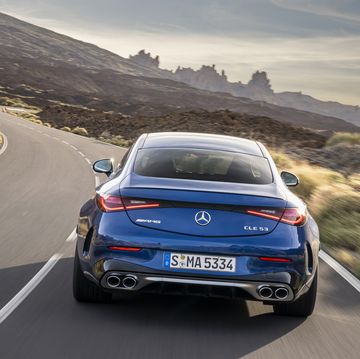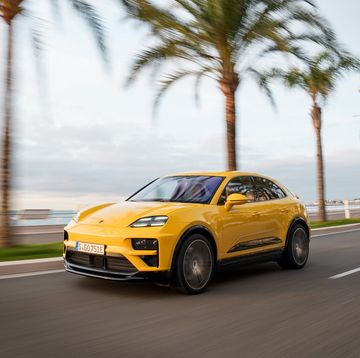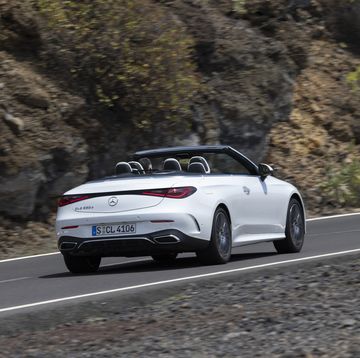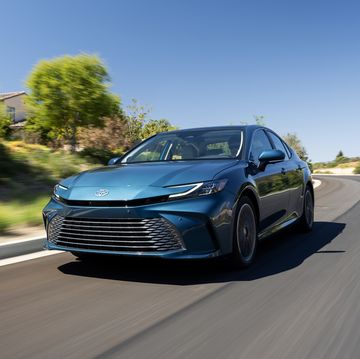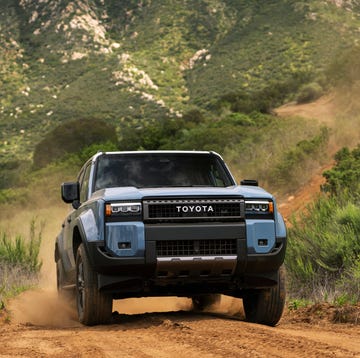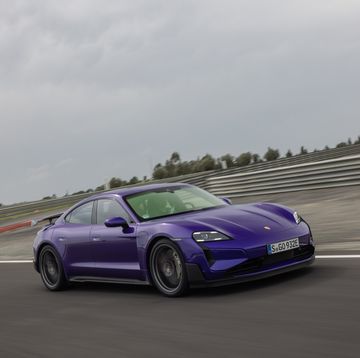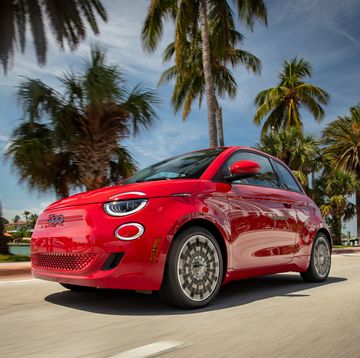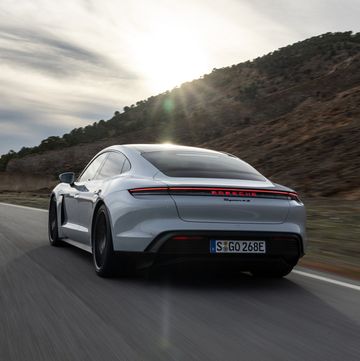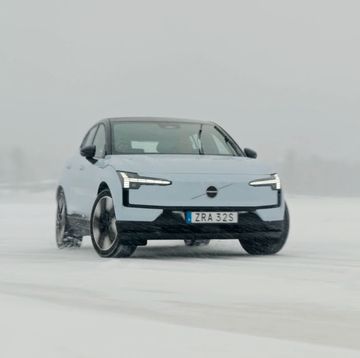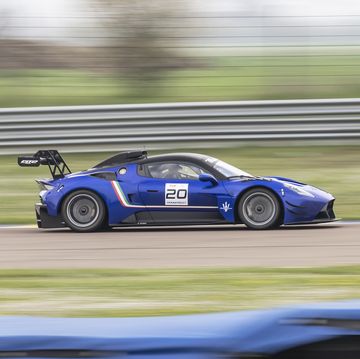The Musée Océanographique in the principality of Monaco has an aquarium filled with creatures and plants collected from the world's oceans. We decided to check out the shark collection during our test drive of Hyundai's third-generation Tiburon. Tiburón is Spanish for "shark," and the folks at Hyundai are hoping that their redesigned sports coupe will take a bigger bite out of that market. They are betting that a sleek new skin and more muscle under the hood are going to make this coupe more menacing to the competition.
We ended up at the fish museum because we couldn't find a parking space anywhere else. After lapping the F1 circuit in Monaco numerous times, we tried to make a pit stop at the café in front of the casino, but our Korean coupe wasn't exotic enough for the valets. They turned up their noses and shooed us away like an unpleasant odor, although the new Tiburon did get a better reception from people with less snooty dispositions. Hyundai is hoping the addition of an optional V-6 will attract more male customers, since 58 percent of current Tiburon buyers are of the female persuasion.
More power under the hood isn't the only change to the 2003 model; it has been restyled inside and out. Like the old coupe that used the previous-generation Elantra platform, the 2003 Tiburon platform is derived from the new-generation Elantra. The wheelbase is 2.2 inches longer than that of the most recent coupe, and the length, width, and height are increased by 2.1 inches, 1.2 inches, and 0.6 inch, respectively. That first Tiburon coupe was a sleek Giugiaro design, while this one is the work of Hyundai's own design studio. The second-generation face lift, with all its bumps and flares, muddled up the coupe's clean lines. The new car is edgier, with sharp creases in the front fenders and a smoother, more tautly stretched skin overall. From the side there's a resemblance to the Ferrari 456GT via the long hood and short rear deck, and from the front it smacks of a Mercury Cougar.
Hyundai's designers call the interior of the car "simple yet functional." We think dark and stark are better descriptions. Every surface in the car is black, and although the materials don't feel cheap, the lack of any sort of accents to break up the monotony gives it a drab and spartan look. Round instrument faces replace elliptical ones, and the rotary climate-control knobs have been moved down in the center of the dash. The front bucket seats are comfortable and very supportive Recaros. There's not much headroom, however, in the rear seats. Slamming the hatch shut with an adult back there could result in a ride to the emergency room. The seats do fold down for carrying larger cargo.
The biggest change to the Tiburon is the addition of an optional V-6—a 181-hp, 2.7-liter DOHC engine that's also found in the Sonata sedan and Santa Fe sport-ute. Hyundai, for the first time, is offering an optional six-speed manual transmission made by Aichi in Japan. The standard transmission is a five-speed manual, and a four-speed automatic with Shiftronic manual control is available as an option. The base engine is the current version's 140-hp, 2.0-liter DOHC four-cylinder mated to either a five-speed manual or a four-speed automatic transmission.
In an effort to improve the Tiburon's handling, the rear suspension on the new coupe has been changed from a strut to a multilink setup. The front remains a strut-type design. An optional 17-inch wheel-and-tire package is also offered for customers who want to put their Tiburon through the twisties at a vigorous pace. Vented front and solid rear disc brakes are standard; ABS is optional.
This latest Tiburon is packaged two ways. There's the base car with the four-cylinder engine, or the upscale GT with the V-6 and leather interior. We only got to sample the GT version of the coupe in France, but the base model's performance should be similar to that of the previous-generation car because the 140-hp engine is a carryover as is the curb weight.
With the traction control turned off, the Tiburon can now smoke the front tires, so it should be a more serious predator for the other pocket rockets in the small-sports-coupe sea. The V-6 pulls strongly and smoothly to its 6000-rpm redline, but it does so without the sweet turbinelike shriek you get in an Acura RSX. A little more growl from the engine and a throatier exhaust note would greatly enhance the notion of sports performance. The six-speed manual worked well, but the shifter needs to be less rubbery-feeling.
The Tiburon's handling is much improved with the optional 17-inch wheels and Michelin Pilot tires, but it still understeers a lot more than would a similarly priced Acura RSX or VW GTI. For a car with such modest handling limits, the Tiburon's ride felt firm, bordering on harsh, but according to Hyundai, our test car was built to European specs, and the U.S. versions will get softer springs and smaller anti-roll bars.
Hyundai hasn't announced what its new Tiburon will cost, but a good guess is the base four-cylinder car with a manual gearbox should run about $15,000. A loaded V-6 with a six-speed manual and the 17-inch wheel package should come in at about $20,000. At that price and with its increased performance, the Tiburon is definitely swimming in sports-coupe waters, but if Hyundai really wants to be a serious menace to the pocket-rocket competition, it needs to sweat the details a little more.
